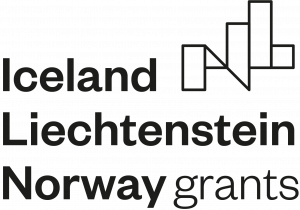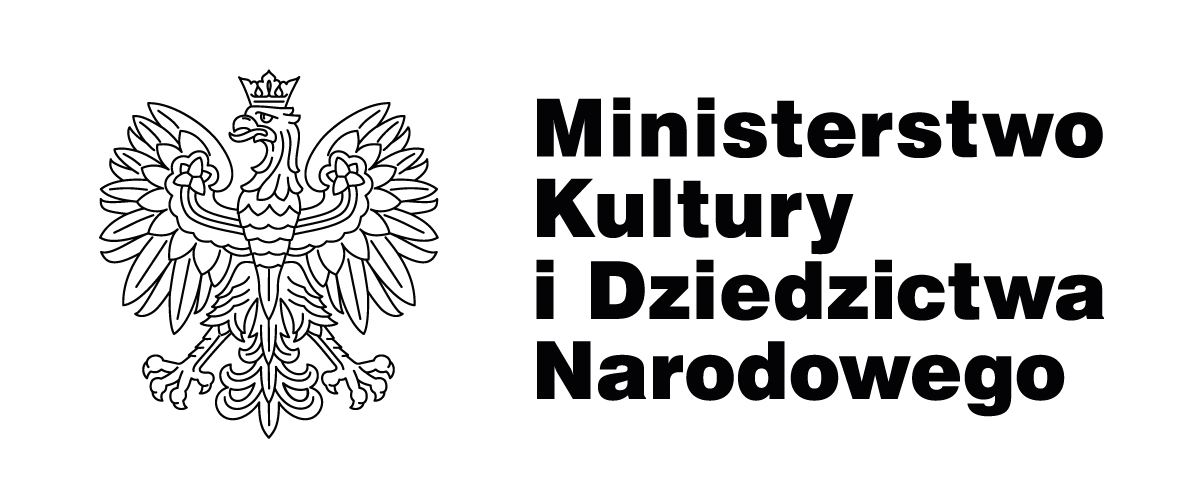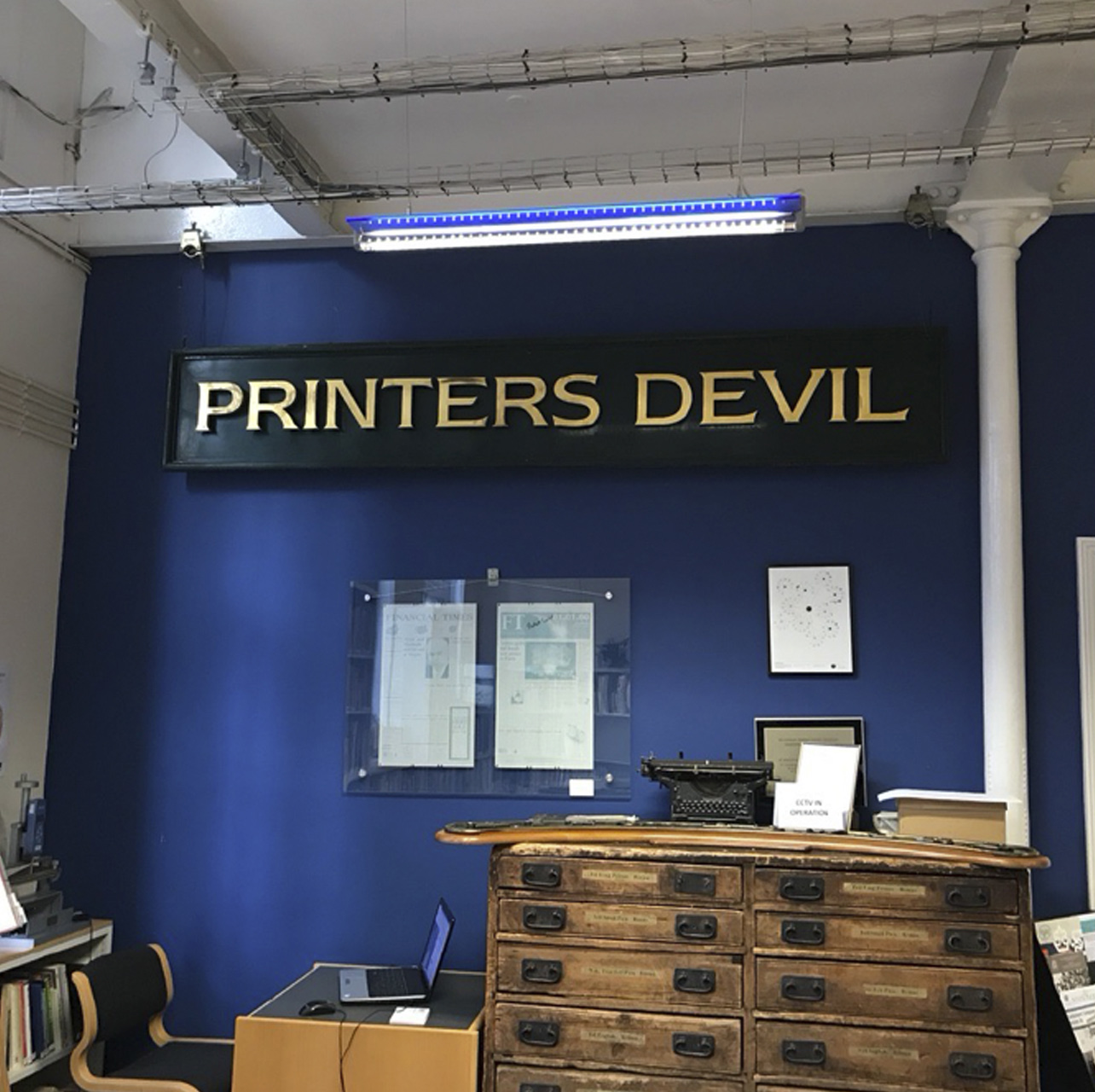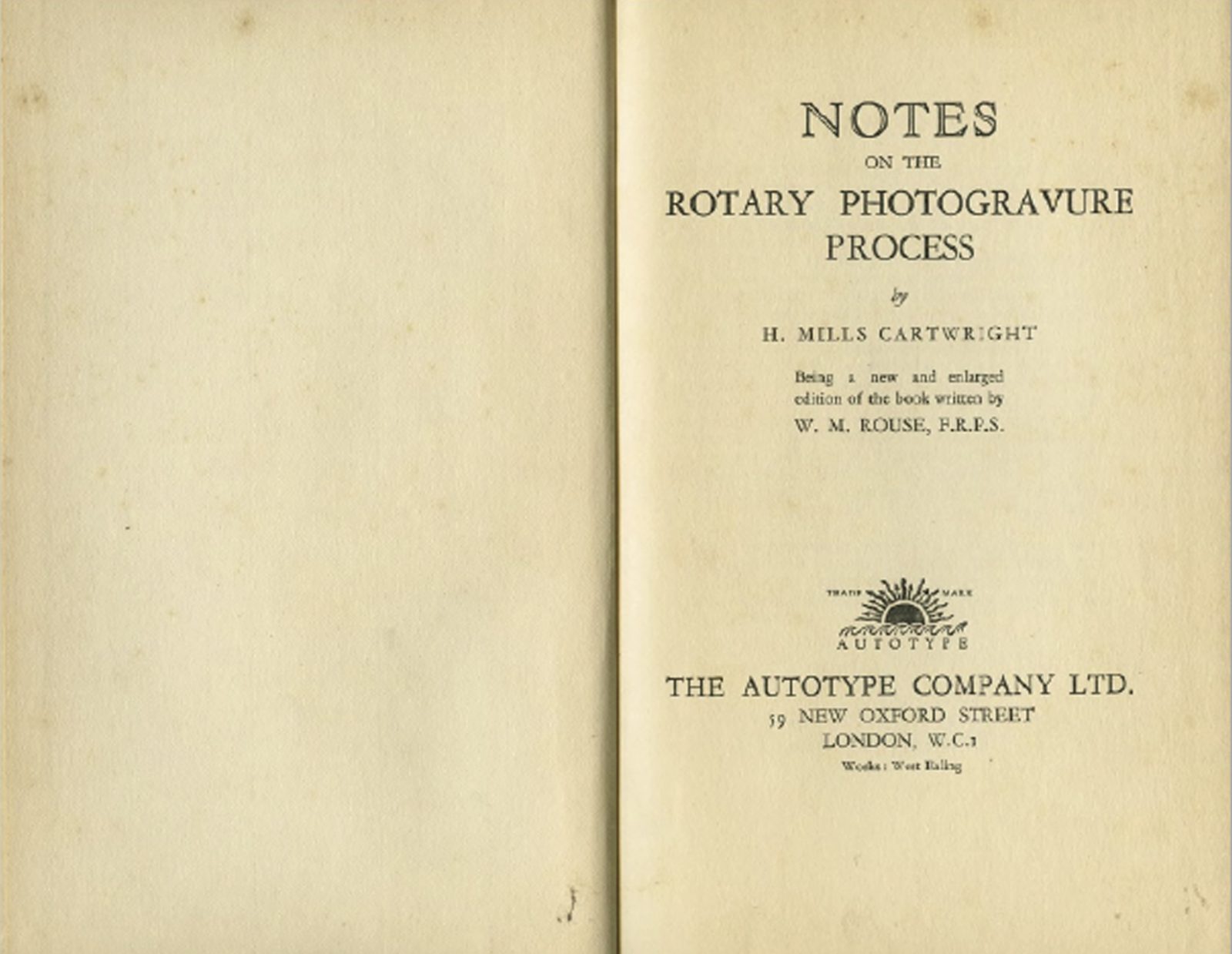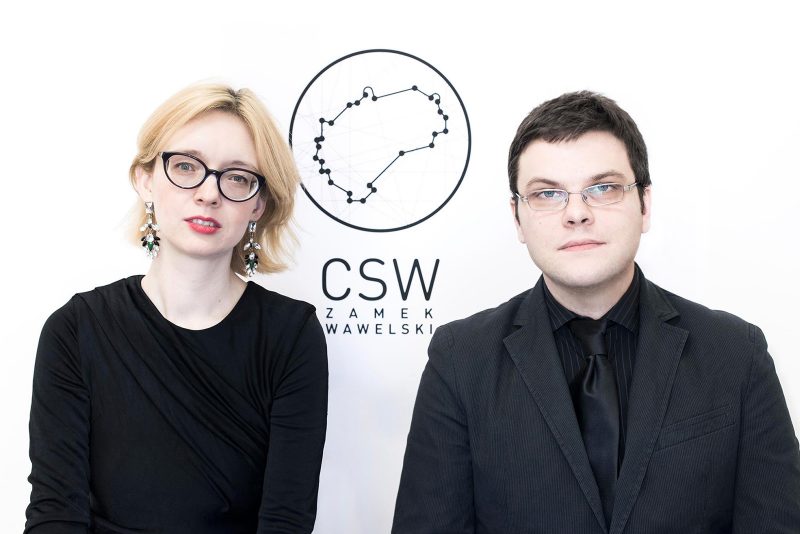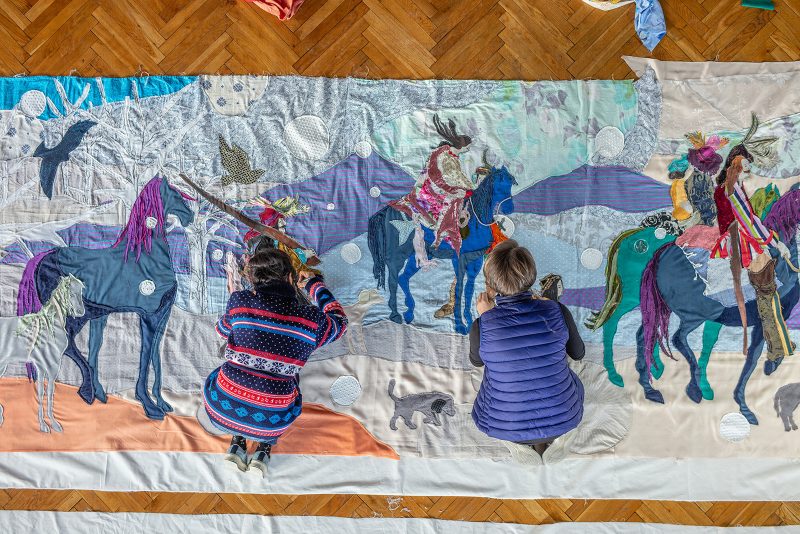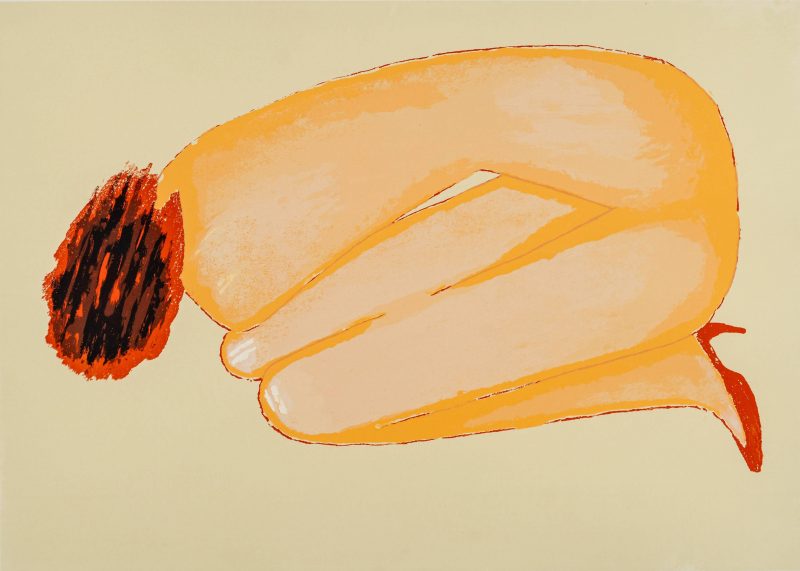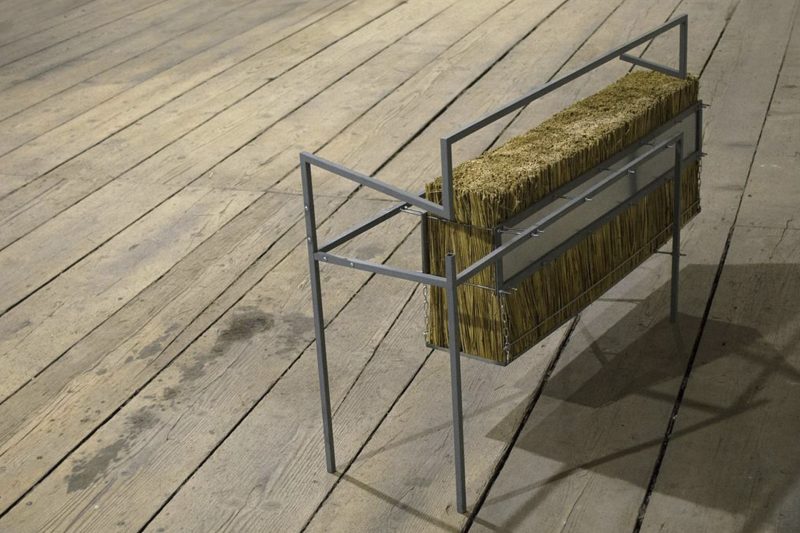
Badanie archiwów dawnej grafiki w celu zintegrowania wiedzy „znalezionej” z prowadzeniem pracowni graficznej czasów post-cyfrowych / Researching historical print archives to integrate 'found’ knowledge into post-digital printmaking workshops / Ян Петтерссон Дослідження архівів старої графіки з метою інтеграції «знайдених» знань з роботою графічної студії в постцифрові часи
I have for the past 25 years researched old photomechanical processes where my main focus has been especially photogravure / heliogravure on copper.
For those of you who does not know what a photogravure looks like, here is some examples of photogravures
Przez ostatnie 25 lat badałem dawne procesy fotomechaniczne, koncentrując się przede wszystkim na fotograwiurze/heliograwiurze na miedzi.
Dla tych z Państwa, którzy nie wiedzą, jak wygląda fotograwiura, oto kilka przykładów tej techniki:
Протягом останніх 25 років я досліджував стародавні фотомеханічні процеси, зосереджуючись головним чином на фотогравюрі/геліогравюрі на міді.
Для тих із вас, хто не знає, як виглядає фотогравюра, ось кілька прикладів цієї техніки:
1. Фотогравюра, Жорж Петі, репродукція картини Томаса де Кейзера «Голландська родина». 2.Едвард Ш. Кертіс, Door of Lodge, Grizzley, Flathead, 1910 р., люб’язно надано Музеєм Преуса, Гортен, Норвегі. 3.Роберт Меплторп, Без назви # 1 з портфоліо Кена Муді, люб’язно надано Graphic Studio University of South Florida, США 4.Люція Арагон, Птах Кху, прямий друк Кетрін Ліберг. 5.Багатий чоловік, фотогравюра Кетрін Ліберг. 6.The Sarong Kebaya,фотогравюра
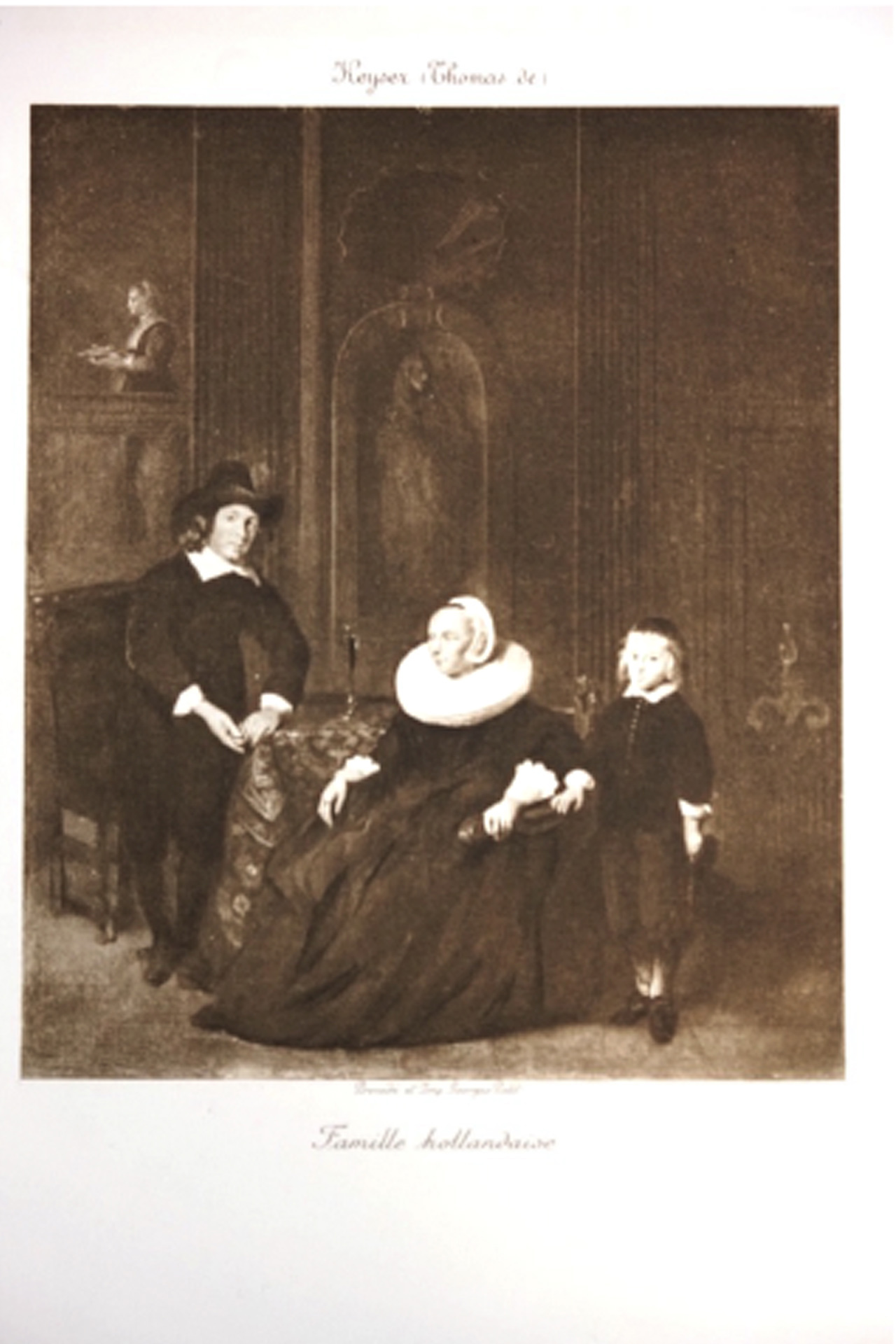
Photogravure by George Petite Edward S. Curtis, Door of Lodge, Grizzley. Robert Maplethorpe Untitled # 1 from the Ken Famille Hollandaise Flathead, 1910, Courtesy Preus Museum. Moody portfolio, Courtesy of Graphic Studion
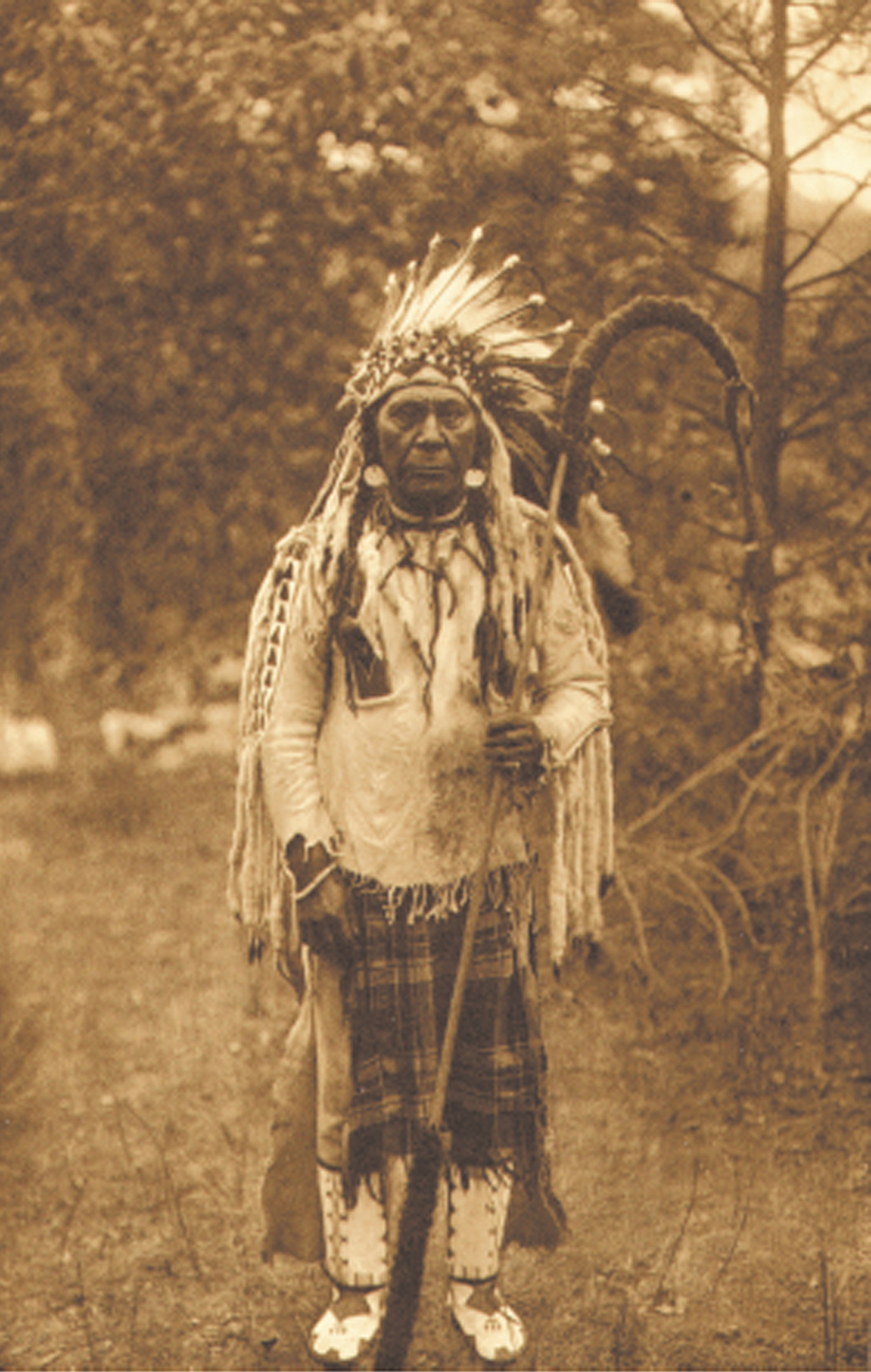
Edward S. Curtis, Door of Lodge, Grizzley. Robert Maplethorpe Untitled # 1 from the Ken Famille Hollandaise Flathead, 1910, Courtesy Preus Museum. Moody portfolio, Courtesy of Graphic Studion Horten, Norway

Robert Maplethorpe Untitled # 1 from the Ken Famille Hollandaise Flathead, 1910, Courtesy Preus Museum. Moody portfolio, Courtesy of Graphic Studion Horten, Norway University of South Florida, USA
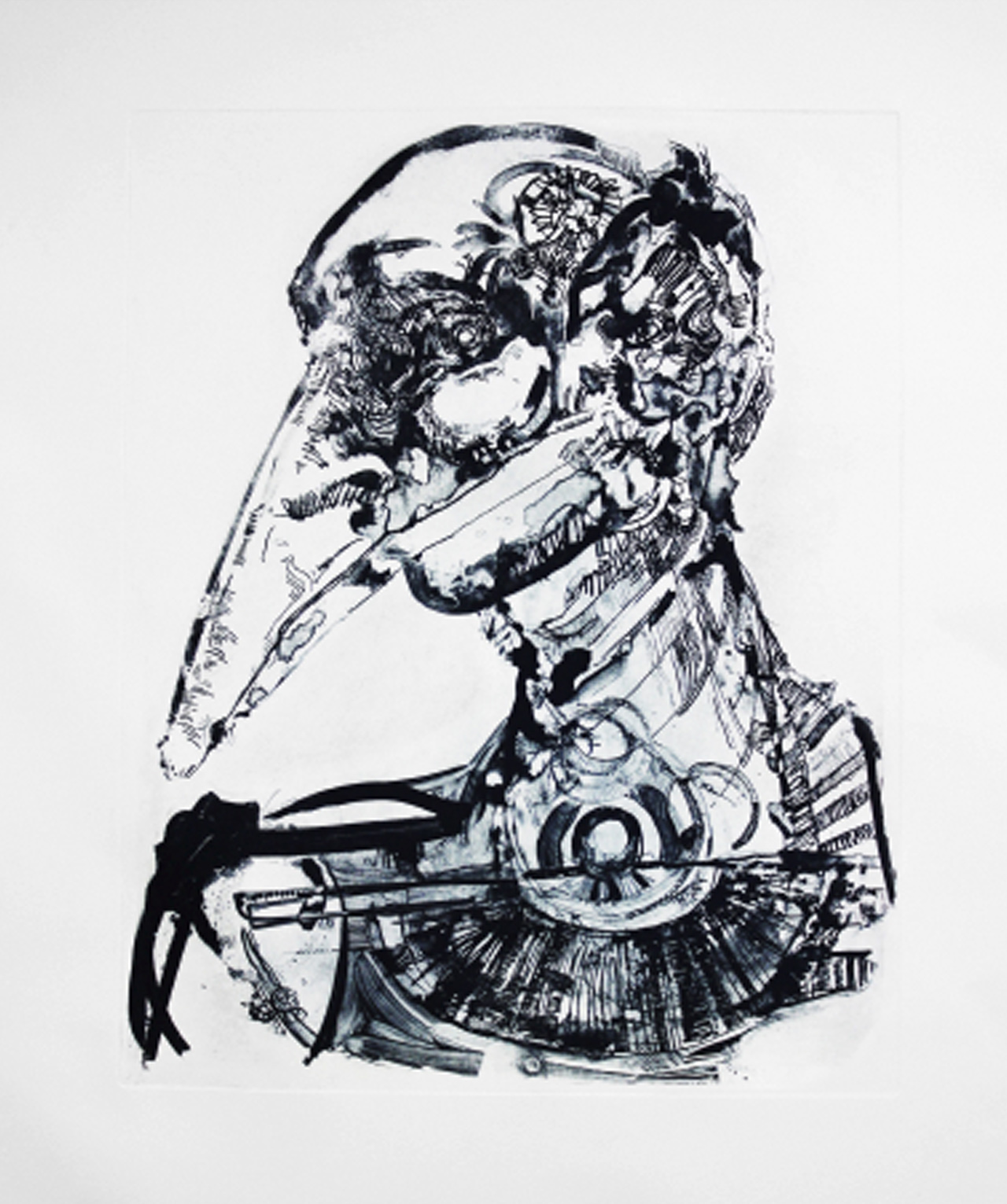
Lucia Aragon “Khu Bird”direct gravur.

Cathrine Liberg “The Wealthy consort” Photogravure
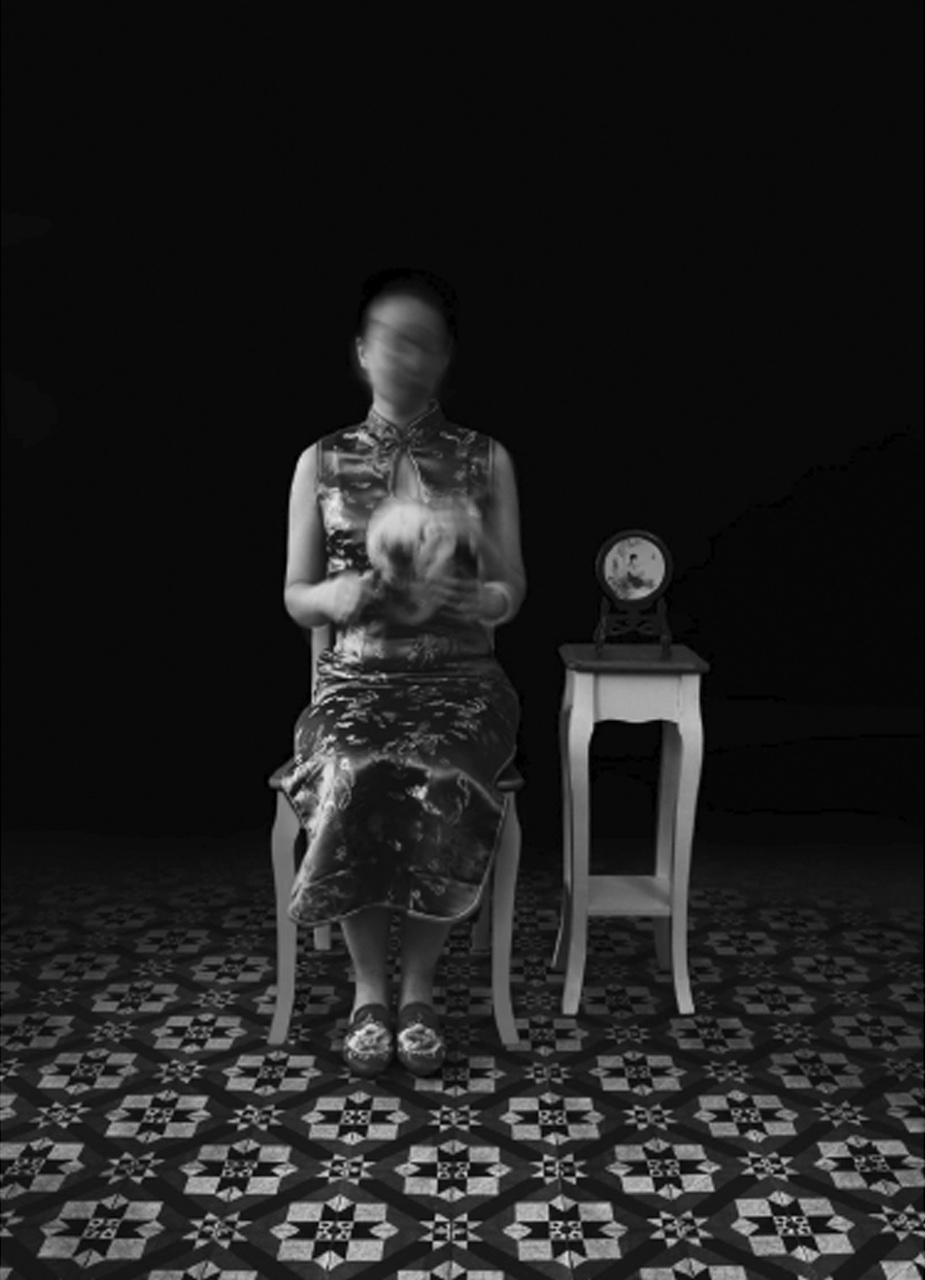
Cathrine Liberg “The Wealthy consort” Cathrine Liberg “The Sarong Kebaya” Photogravure
One of my art projects that came out of the research was The True Lasse a project with 60 photogravures in color. Here are 3 examples
Jednym z moich projektów artystycznych, który wywodzi się z tych badań, jest seria The True Lasse (Prawdziwy Lasse), składająca się z 60 barwnych fotograwiur. Oto trzy przykłady.
Одним із моїх мистецьких проектів, який виник у результаті цього дослідження, є серія The True Lasse («Справжній Лассе»), що складається з 60 кольорових фотогравюр. Ось три приклади.
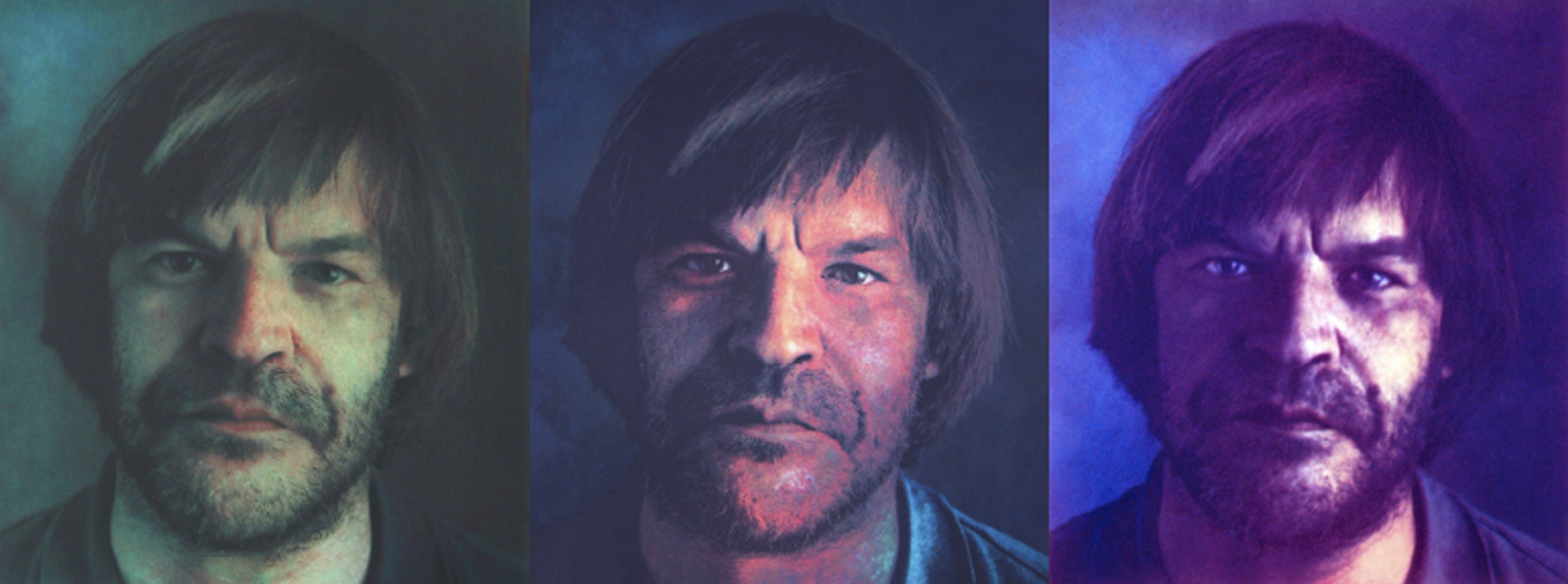 Widok wystawy, Amerykańska zabawa – portrety wielokrotne, Jan Pettersson Prawdziwy Lasse fotograwiura /
Widok wystawy, Amerykańska zabawa – portrety wielokrotne, Jan Pettersson Prawdziwy Lasse fotograwiura /
Jan Pettersson The True Lasse photogravure /Ян Петтерссон / Справжній ЛассеP / фотогравюра
Why would you then consider researching these archives & what would come out of it & how it could be used in a contemporary context in teaching workshops.
The Print Department at Modern Museum of Art New York, USA, 1995
https://www.moma.org/collection/about/curatorial-departments/drawings-prints
Biblioteque Nationals print collection, Paris, France, 2002
https://www.bnf.fr/en/richelieu-library-prints-and-photography-reading-room
Preus Photomuseum in Horten Norway 2003
https://www.preusmuseum.no/eng
Musée Goupil in Bordeaux, France, 2003
https://www.musee-aquitaine-bordeaux.fr/en/article/goupil-museum
The main focus here was to acquire as much information & knowledge on the photogravure process both technical, historical & contemporary through prints, plates & books.
In conjunction with visiting these important print archives a number of human archives were visited & interviews were executed with well-known photogravurist´s as Jon Goodman in Massachusetts USA, Deli Sacilotto & Paul Taylor in New York, Johan de Zoete in Amsterdam & Lasse Mellberg in Sweden.
http://jgoodgravure.com/about.html
https://www.renaissancepress.com
https://johandezoete.nl/about/
https://www.alternativephotography.com/copper-photogravure/
Archiwa
Część I: Badania już przeprowadzone w archiwach
Przygotowując moją pierwszą publikację Fotograwiura – Badanie archeologiczne (Photogravure – an Archaeological Research) odwiedziłem następujące instytucje:
Dział Rysunków i Grafik Muzeum Sztuki Nowoczesnej w Nowym Jorku, USA, 1995
https://www.moma.org/collection/about/curatorial-departments/drawings-prints
Zbiory Rycin i Fotografii Biblioteki Narodowej w Paryżu, Francja, 2002
https://www.bnf.fr/en/richelieu-library-prints-and-photography-reading-room
Muzeum Fotografii Preus w Horten, Norwegia, 2003
https://www.preusmuseum.no/eng
Musée Goupil w Bordeaux, Francja, 2003
https://www.musee-aquitaine-bordeaux.fr/en/article/goupil-museum
Głównym celem na tym etapie było zdobycie jak największej ilości informacji na temat procesu fotograwiurowego – jego aspektów technicznych, historii, jak i współczesności, czego starałem się dokonać poprzez badanie odbitek, płyt i książek.
Przy okazji odwiedzin w tych ważnych kolekcjach graficznych, przeprowadziłem wywiady ze znanymi twórcami fotograwiur („archiwa ludzkie”), m.in. z Jonem Goodmanem (Massachusetts, USA), Deli Sacilotto i Paulem Taylorem w Nowym Jorku, Johanem de Zoete w Amsterdamie i Lasse Mellbergiem w Szwecji.
http://jgoodgravure.com/about.html
https://www.renaissancepress.com
https://johandezoete.nl/about/
https://www.alternativephotography.com/copper-photogravure/
Informacje zgromadzone w trakcie tych wizyt i wywiadów, wraz z wiedzą już nabytą i ugruntowaną, zebrałem w mojej pierwszej publikacji Fotograwiura – Badanie archeologiczne z roku 2007. Przemyślenia umieszczone w nowym kontekście i dotyczące rozszerzonego zakresu technik graficznych zostały natomiast przedstawione w publikacji Printmaking in the Expanded Field (Grafika warsztatowa w rozszerzonym zakresie) wyd. I 2017, wyd. II 2019.
Архіви
Серед досліджених мною архівів були музейні збірки, колекції, бібліотеки, «людські архіви», тобто особи із відповідними знаннями, архіви Інтернету та архіви вторинного обігу історії, тобто блошині ринки. Усі вони відіграють важливу роль у моїх дослідженнях і використанні зібраної інформації або придбаних об’єктів, таких як книги, пластини та друковані видання.
Тож звідки виникла ідея дослідження цих архівів, що з цього може вийти і як це можна використати в сучасному контексті в дидактичних студіях?
Частина I: Уже проведені дослідження в архівах
Готуючи свою першу публікацію «Фотогравюра – археологічне дослідження» (Photogravure – an Archaeological Research), я відвідав такі установи:
Відділ малюнків і гравюр, Музей сучасного мистецтва, Нью-Йорк, США, 1995
https://www.moma.org/collection/about/curatorial-departments/drawings-prints
Колекції гравюр і фотографій Національної бібліотеки в Парижі, Франція, 2002
https://www.bnf.fr/en/richelieu-library-prints-and-photography-reading-room
Музей фотографії Преуса в Гортені, Норвегія, 2003
https://www.preusmuseum.no/eng
Musée Goupil, Бордо, Франція, 2003
https://www.musee-aquitaine-bordeaux.fr/en/article/goupil-museum
Головною метою на цьому етапі було отримати якомога більше інформації про процес фотогравірування – його технічні аспекти, історію та сучасність, чого я намагався досягти, досліджуючи відбитки, пластини та книги.
Відвідуючи ці важливі графічні колекції, я проводив інтерв’ю з відомими авторами фотогравюр («людські архіви»), зокрема: з Джоном Гудманом (Массачусетс, США), Делі Сачілотто та Полом Тейлором у Нью-Йорку, Йоханом де Зоете в Амстердамі та Лассе Меллбергом у Швеції.
http://jgoodgravure.com/about.html
https://www.renaissancepress.com
https://johandezoete.nl/about/
https://www.alternativephotography.com/copper-photogravure/
Інформація, зібрана під час цих візитів та інтерв’ю, разом із уже набутими та засвоєними знаннями, була зібрана в моїй першій публікації «Фотогравюра – археологічне дослідження» 2007 року. Роздуми, розміщені в новому контексті та щодо розширеного діапазону графічних технік, були представлені в публікації Printmaking in the Expanded Field («Графічна майстерня у розширеному діапазоні») вид. перше – січень 2017 року, вид. друге – лютий 2019 року.
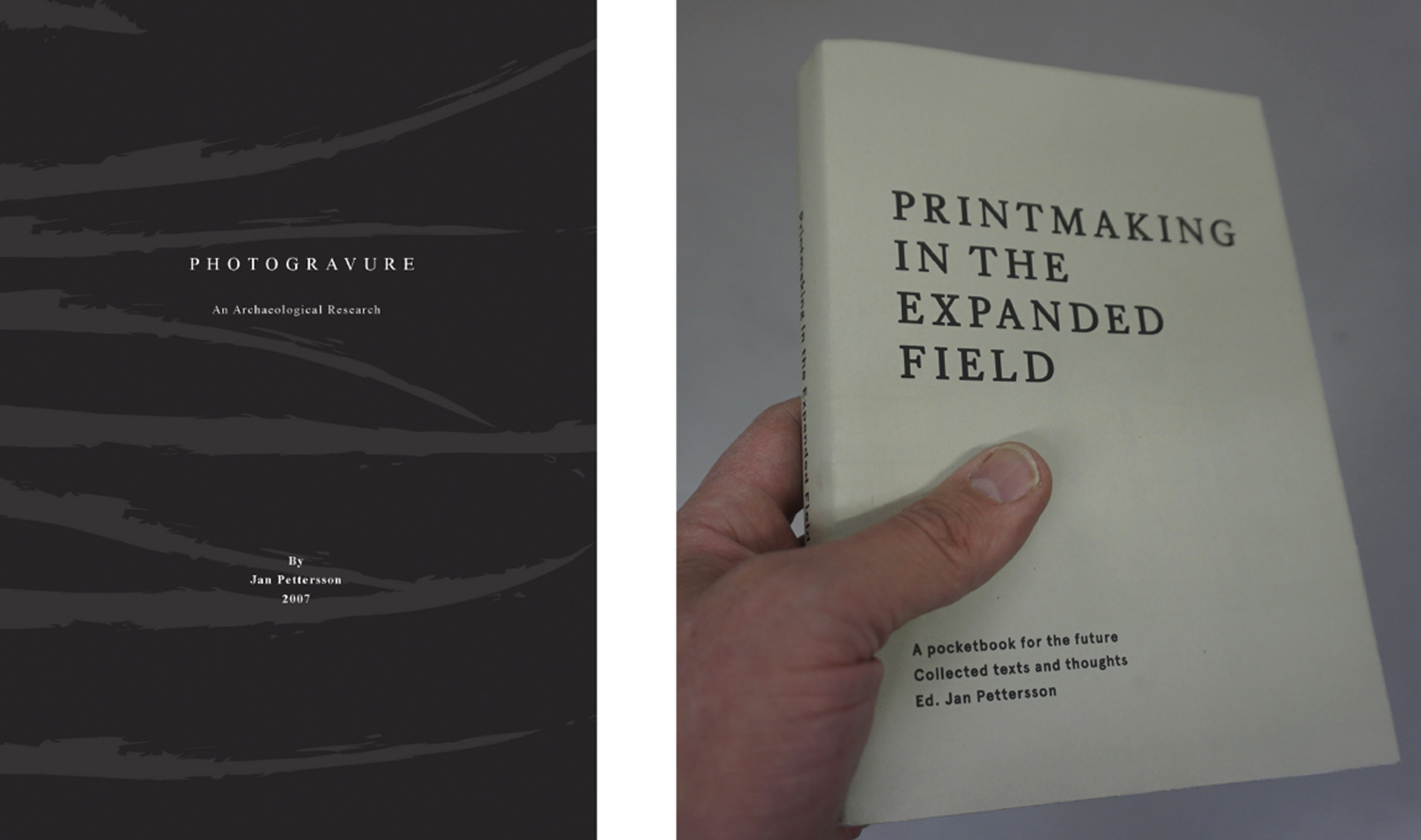
Zdjęcia Jan Pettersson / Photos Jan Pettersson / Фотографії Яна Петтерссона
Obecnie badania wkroczyły w drugi etap.
Część II: Bieżące badania w archiwach
For this the 2nd part of the research I have visited the following Institutions.
London, St Bride Foundations Library 2020
https://www.sbf.org.uk
Atelier-Musée Imprimerie(AMI) at Malesherbes 2021
Atelier-Musée Imprimerie
Musee Arts et Metiers, Paris 2021
https://www.arts-et-metiers.net
The Chalcographie du Louvre, Paris 2021
https://ateliersartmuseesnationaux.fr/en/engraving/conservation-of-a-historic-collection
W drugim etapie badań odwiedziłem następujące instytucje:
Londyn, Biblioteka Fundacji St Bride, 2020
https://www.sbf.org.uk
Atelier-Musée de l’Imprimerie (AMI) w Malesherbes, 2021
Atelier-Musée Imprimerie
Musée des Arts et Métiers, Paryż, 2021
https://www.arts-et-metiers.net
Chalkografia Luwru, Luwr, Paryż, 2021
https://ateliersartmuseesnationaux.fr/en/engraving/conservation-of-a-historic-collection
Londyn, Biblioteka Fundacji St Bride, 2020
Нині дослідження перейшли на другий етап.
Частина ІІ: Сучасні дослідження в архівах
На другому етапі дослідження я відвідав такі установи:
Лондон, Бібліотека фонду St Bride, 2020
https://www.sbf.org.uk
Atelier-Musée de l’Imprimerie (AMI) в Мелезербі, 2021
Atelier-Musée Imprimerie
Musée des Arts et Métiers, Париж, 2021
https://www.arts-et-metiers.net
Халькографія Лувру, Лувр, Париж, 2021
https://ateliersartmuseesnationaux.fr/en/engraving/conservation-of-a-historic-collection
Лондон, Бібліотека фонду St Bride, 2020
1.Фото Яна Петтерссона Стіна, що огороджує читальний зал St Bride . 2.Твори Г. Міллса Картрайта, опубліковані Autotype, виробником пігментного паперу для фотогравірування
The St Bride Foundation was set up in 1891 it was created to serve the print & publishing studios that were beginning to grow rapidly on Fleet Street. Over more than 1 century it has established itself as an extremely important archive concerning graphic design, printing & publishing. The library is without a doubt the largest concerning the concept of the print in the world. It has over 100.000 items. What I was interested in was to use their reading room which is open twice a month or by appointment.
I visited it March 11th 2020 just before the Covid 19 pandemic breakout & the shutdown of Europe. Before going there, I made an appointment & had selected a # of books & catalogues all related to photogravure & to give you an idea of what I chosen; here is the list I selected & a samples of what I looked at.
Fundacja St Bride powstała w roku 1891, aby służyć oficynom drukarskim i wydawniczym, których szybko przybywało na Fleet Street. W ciągu ponad stu lat stała się niezwykle ważnym archiwum poświęconym projektowaniu graficznemu, drukarstwu i sztuce wydawniczej. Jej biblioteka ma bez wątpienia największe na świecie zbiory związane z wynalazkiem druku. Składa się na nie ponad 100 tys. pozycji. Chciałem skorzystać z ich czytelni, która jest czynna dwa razy w miesiącu lub udostępniana po uprzednim umówieniu.
Odwiedziłem ją 11 marca 2020 roku, tuż przed wybuchem pandemii Covid 19 i lockdownem w Europie. Zanim się tam wybrałem, uzgodniłem termin wizyty i zamówiłem szereg książek i katalogów – wszystkie one dotyczyły fotograwiury. Aby dać Państwu wyobrażenie o tym, co wybrałem: oto moja lista i próbki przeglądanej literatury.
Wybrane książki z biblioteki St Bride
Фонд St Bride був заснований 1891 року для обслуговування друкарень і видавництв, які швидко розвивалися на Фліт-стріт. За понад сто років він став надзвичайно важливим архівом, присвяченим графічному дизайну, поліграфії та видавничій справі. Його бібліотека, безсумнівно, має найбільші у світі колекції, пов’язані з винаходом друкарства. Вони складаються з понад 100 тис. позицій. Я хотів скористатися їхнім читальним залом, який відкритий двічі на місяць або доступний за попереднім записом.
Я відвідав його 11 березня 2020 року, саме перед спалахом пандемії Covid 19 і карантину в Європі. Перш ніж поїхати туди, я домовився про візит і замовив кілька книг і каталогів, усі з яких стосувалися фотогравюри. Щоб дати вам уявлення про те, що я вибрав: ось мій список і зразки літератури, яку я переглянув.
Обрані книги з бібліотеки St Bride
Atelier-Musée Imprimerie (AMI) at Malesherbes 2021
Researching for European print museums on the internet I came across several of them but one particular caught my eye, Atelier – Musée Imprimerie at Malesherbes. It is situated 70 kilometers outside Paris in the sleepy town with the same name.
To go out here is a day trip. It takes 1 ½ hrs out to Malesherbes with the RER train from Gare Austerlitz in Paris. From the train station it is a 15 min walk to get to the Museum which is situated outside the town. The museum takes you through the history of printing all the way from the invention of the movable type up to the digital revolution. It is an impressive sight to walk into the museum that covers 5000 m2 & is filled with objects relating to the concept of the print. There is everything from a copy of Gutenberg´s wooden press to the start of the digital technology, workshops for making paper & they run classes where you can learn marbling, learn how to set type the old way, binding of books & of course the main feature printing. There are several machines that have been restored and are fully operational for printing. With more than 100 machines on display it is a must see for anyone who is interested in the history of the print & its machines.
Atelier-Musée de l’Imprimerie (AMI) w Malesherbes, 2021
W trakcie internetowych poszukiwań europejskich muzeów grafiki natknąłem się na kilka, z których jedno szczególnie zwróciło moją uwagę: Atelier-Musée de l’Imprimerie w Malesherbes, położone w oddalonym 70 kilometrów od Paryża sennym miasteczku o tej właśnie nazwie.
Przyjazd tutaj to całodniowa wycieczka. Do Malesherbes jedzie się półtorej godziny pociągiem RER z dworca Austerlitz w Paryżu. Ze stacji jest 15 minut spacerem do muzeum, położonego poza miastem. Muzeum prowadzi zwiedzających przez historię druku od wynalezienia ruchomej czcionki aż po rewolucję cyfrową. Niesamowite wrażenie robi wejście do muzeum, które zajmuje powierzchnię 5000 m2 i jest wypełnione obiektami związanymi z grafiką i drukiem. Jest tu wszystko: od repliki drewnianej prasy drukarskiej Gutenberga po początki technologii cyfrowej; mieszczą się tu pracownie wytwarzania papieru i prowadzące zajęcia, podczas których można nauczyć się marmurkowania, dowiedzieć się, jak starą metodą składać czcionki czy oprawiać książki, a główną rolę odgrywa oczywiście druk. Znajduje się tam kilka odrestaurowanych, przywróconych do pełnej sprawności dawnych maszyn drukarskich. Ogólna liczba ponad 100 eksponowanych maszyn czyni to miejsce obowiązkowym punktem programu dla każdego, kto jest zainteresowany historią druku i jego mechanizacji.
Atelier-Musée de l’Imprimerie (AMI) у Мелезербі, 2021
Під час мого пошуку в Інтернеті європейських музеїв графіки я натрапив на кілька, один із яких особливо привернув мою увагу: Atelier-Musée de l’Imprimerie у Малезербі, розташований у сонному містечку саме з такою назвою, віддаленому на 70 кілометрів від Парижа.
Приїзд сюди – це подорож на цілий день. Мелезерб розташовується на відстані півтори години поїздом RER від вокзалу Аустерліц у Парижі. Від вокзалу до музею, розташованого за містом, 15 хвилин пішки. Музей проводить відвідувачів через історію друку від винаходу рухомого шрифту аж до цифрової революції. Неймовірно вражає вхід до музею, який займає площу 5000 м2 і наповнений предметами, пов’язаними з графікою та поліграфією. Тут є все: від копії дерев’яного друкарського верстата Гутенберга до початків цифрових технологій; тут є майстерні з виготовлення паперу, які проводять заняття, під час яких можна навчитися мармуруванню паперу, дізнатися, як складати або переплітати книги старовинним способом, і, звичайно, головну роль відіграє друк. Є кілька відреставрованих старих друкарських машин, які приведені в повний робочий стан. Загальна кількість експонатів, понад 100 машин, робить це місце обов’язковим для відвідування всім, хто цікавиться історією друкарства та його механізації.
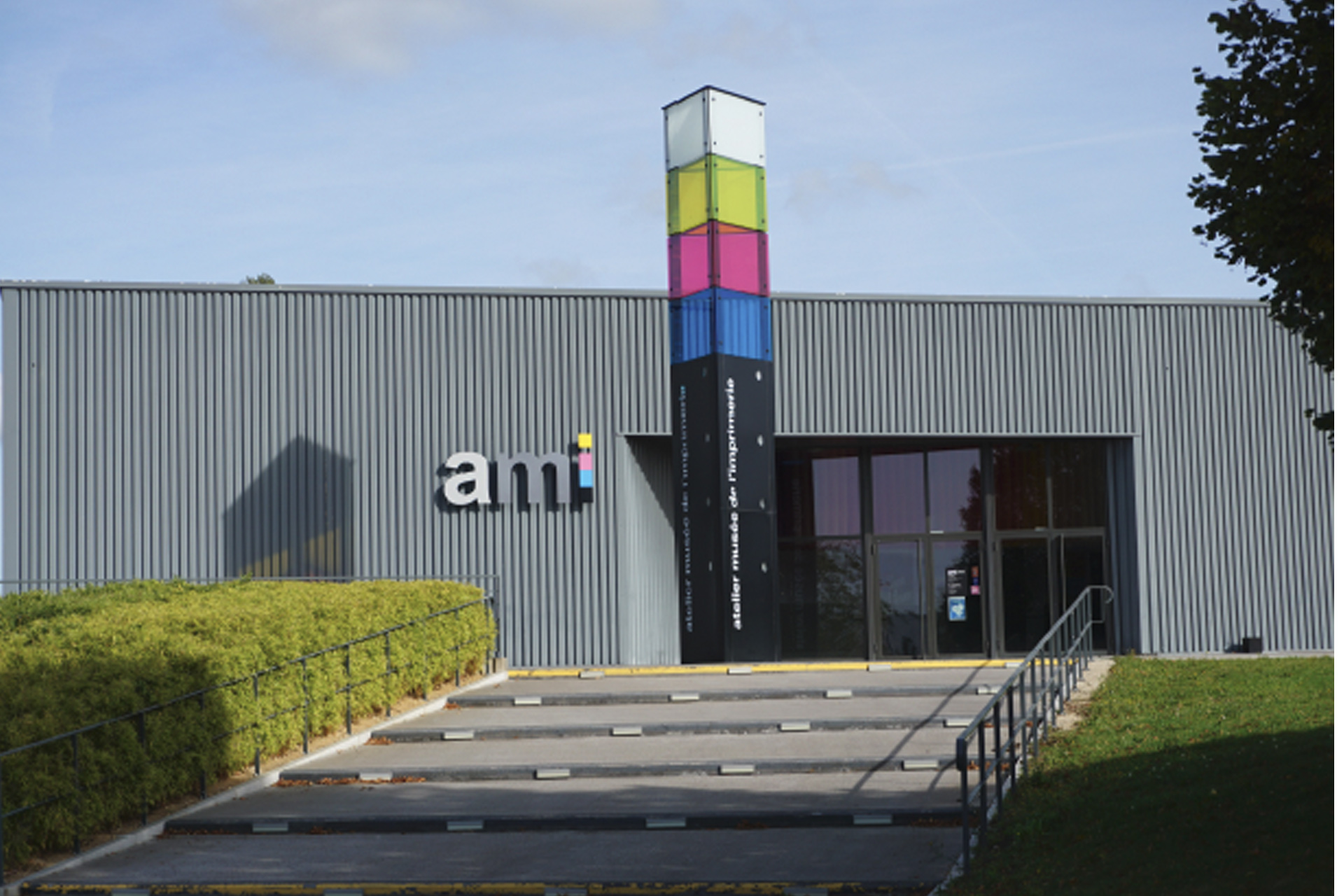
Wejście główne do Atelier-Musée de l’Imprimerie w Malesherbes. Zdjęcie Jan Pettersson / The main entrance of the Atelier – Musée Imprimerie at Malesherbes. Photo Jan Pettersson/ Головний вхід до Atelier-Musée de l’Imprimerie в Мелезербі. Фотографія Ян Петтерссон
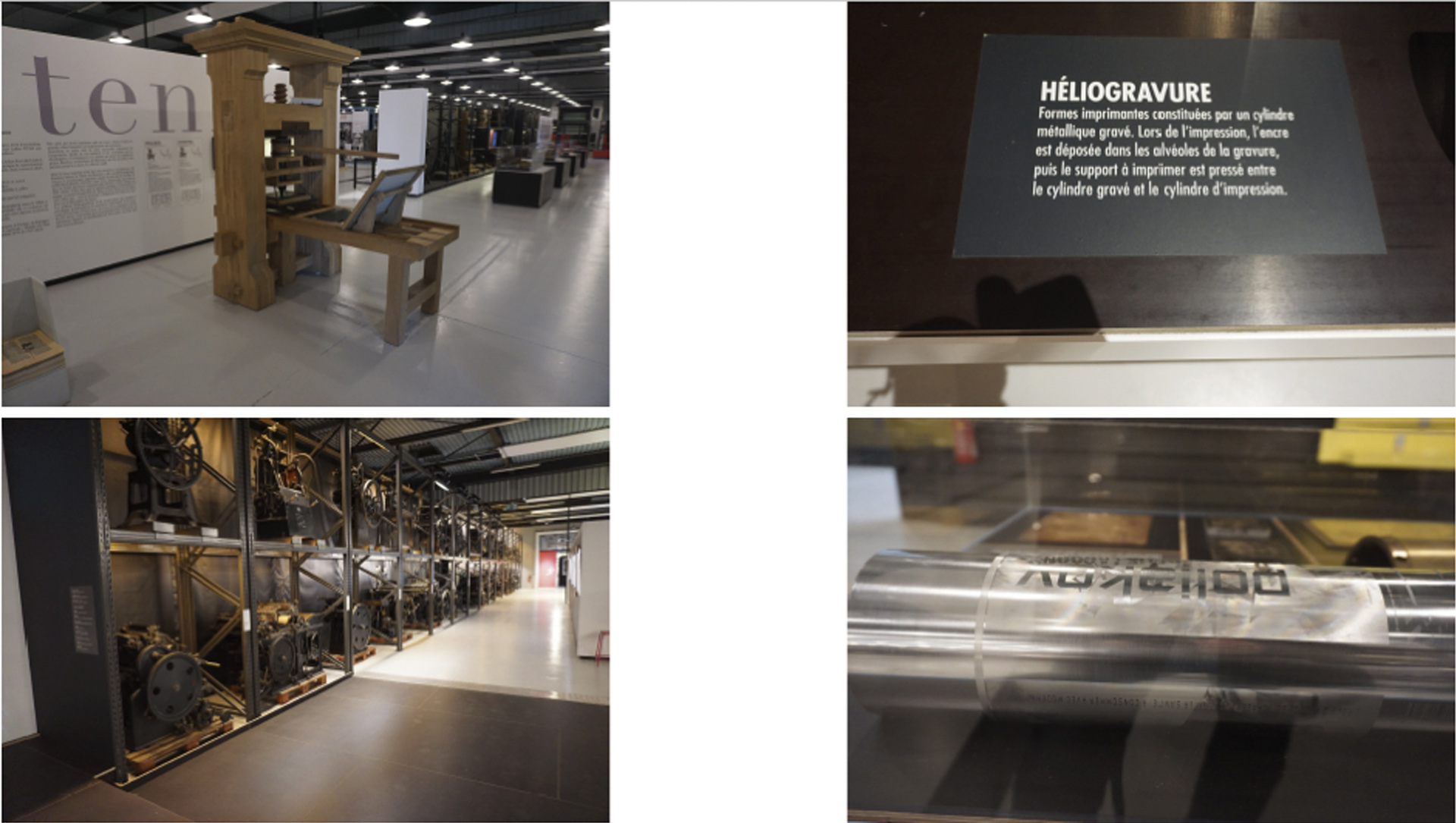
Znajdziecie tu wszystko: od repliki prasy Gutenberga po piękne maszyny typograficzne, cylindry rotograwiurowe i wiele, wiele więcej, Zdjęcie Jan Pettersson /Here you will find everything from a replica of Gütenbergs press to beautiful machines for typograhy, rotogravure cylinders & much much morePhoto Jan Pettersson / Тут знайдете усе: від копії пресу Гутенберга до чудових машин високого друку, циліндрів глибокого друку і багато-багато іншого
Фотографії Яна Петтерссона
Musée Arts et Metiers Paris
I had been in Paris many times & had of course heard of the museum. It was not in the plan but during a rainy day in I visited there for a couple of hrs. It is a museum for the preservation of inventions & technical pioneering. Walking through the many rooms of the collection there I arrived at the room for photography, film & print and discovered that they actually had the cradle of the French development of photomechanical process there. Here are some examples.
Muzeum Sztuk i Rzemiosł (Musée des Arts et Métiers), Paryż
Byłem w Paryżu wielokrotnie i oczywiście słyszałem o tym muzeum. Nie planowałem wizyty, ale pewnego deszczowego dnia spędziłem tam kilka godzin. Zadaniem tego muzeum jest dokumentowanie wynalazków i pionierskich rozwiązań technicznych. Spacerując po licznych salach, dotarłem do pomieszczenia poświęconego fotografii, filmowi i drukarstwu, gdzie – jak odkryłem – można zapoznać się z ewolucją procesu fotomechanicznego w wydaniu francuskim. Oto kilka przykładów.
Музей мистецтв і ремесел (Musée des Arts et Métiers), Париж
Я був у Парижі багато разів і, звичайно, чув про цей музей. Я не планував відвідувати його, але одного дощового дня я провів там кілька годин. Метою цього музею є документування винаходів і новаторських технічних рішень. Пройшовши через численні зали, я дійшов до приміщення, присвяченого фотографії, кіно та друку, де, як я виявив, можна дізнатися про еволюцію фотомеханічного процесу у французькій версії. Ось кілька прикладів.
1. Пробний фотогравюрний друк за методом Пласе, 1863 р. / 2.Три форми для глибокого друку, виготовлені за допомогою техніки гальванопластики, система Bouquillon, близько 1850 року Фотографії Яна Петтерссона

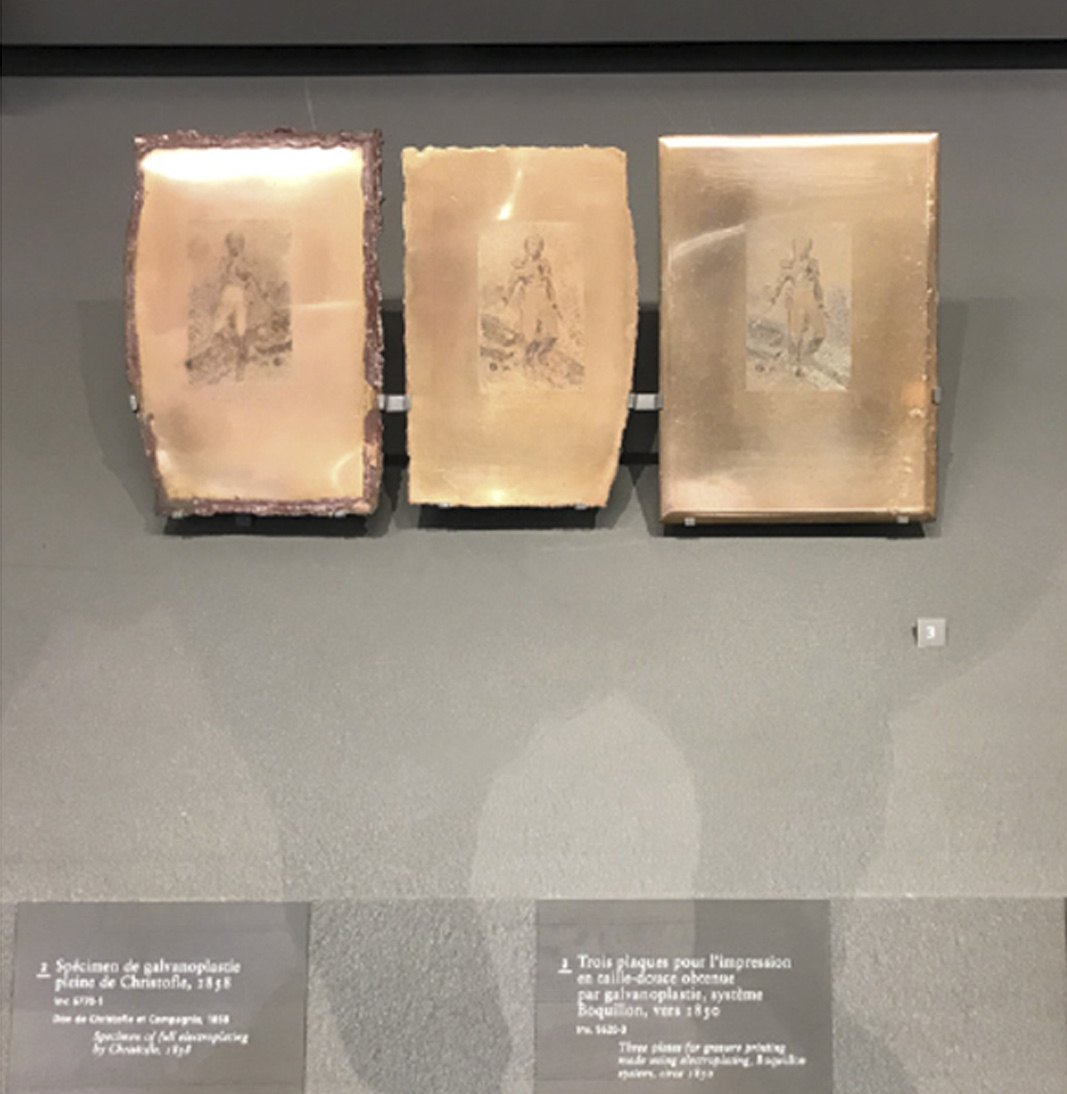
Paryż, Chalcographie du Louvre, 2021
Istniejąca od roku 1797 Pracownia Wklęsłodruku w Luwrze przechowuje około 15 tys. matryc do wykonywania różnego rodzaju rycin, od akwafort, grawerowania rylcem, przez akwatinty po fotograwerowanie i heliograwiury. W jej zbiorach znajduje się m.in. 837 miedziorytów ilustrujących opis Egiptu, wykonanych na zlecenie Napoleona i opublikowanych w 10 tomach w latach 1809–1829. Ta wielka kolekcja matryc ciągle się powiększa dzięki nowym nabytkom, darowiznom i wkładowi współczesnych artystów, którzy tam przychodzą i pracują. Zespół drukarski Pracowni Wklęsłodruku w Luwrze ma ekspercką wiedzę i prowadzi zaawansowane badania różnych rodzajów farb w celu uzyskania ich zgodności z historycznymi odbitkami. Specjalnością zespołu są rozmaite czernie: od gęstych przez ciepłe po chłodne i od przezroczystych po zabarwiane. Wiedza ta pozwala im tworzyć takie historyczne odbitki:
Париж, Chalcographie du Louvre, 2021
Студія глибокого друку в Луврі, яка існує з 1797 року, зберігає приблизно 15 тис. матриць для виготовлення різних типів гравюр, від офортів, гравірування стилусом і акватинти, до фотогравюр і геліогравюр. Його колекції включають, серед іншого: 837 мідьоритів, що ілюструють опис Єгипту, створені на замовлення Наполеона і опубліковані в 10 томах у 1809–1829 роках. Ця велика колекція матриць продовжує збільшуватися завдяки новим придбанням, пожертвам і внескам сучасних художників, які туди приїжджають і працюють. Команда друку студії глибокого друку Лувру має експертні знання та проводить поглиблені дослідження різних типів фарб, щоб забезпечити їх сумісність з історичними відбитками. Команда спеціалізується на різних відтінках чорного кольору: від густого теплого до холодного та від прозорого до тонованого. Ці знання дозволяють їм створювати такі історичні відбитки:

Przygotowanie do druku Gotowa, ręcznie kolorowana odbitka Zdjęcia Jan Pettersson / “ Preparing to print “Finished handcolored print” Photos Jan Pettersson / Підготовка до друку / Ручний кольоровий друк Фотографія Яна Петтерссона
In preparation for my visit I had contacted the curator team in advance and presented my research. To get there you take the RER train up to La Plaine Stade de France & after a 10 min walk, we arrived at the new location of the print studio & were greeted by the Print & Curator Team.
My visit here was focused on a discussion around the photogravure/heliogravure media how it is named and perceived in different forums of discussion as in books, on the internet & in the realm of printmaking. As well as an in-depth conversation on papers, inks, felts, oils, varnishes & wiping materials and printing of plates.
W ramach przygotowań do wizyty skontaktowałem się z zespołem kuratorskim i przedstawiłem swoje badania. Aby się tam dostać, należy dojechać pociągiem RER do stacji La Plaine Stade de France. Po 10 minutach spaceru dotarliśmy do nowej lokalizacji warsztatu graficznego, gdzie powitał nas zespół drukarzy i kuratorów.
Podczas wizyty koncentrowałem się na technikach fotograwiurowych/heliograwiurowych, ich nazewnictwie i percepcji na różnych forach dyskusyjnych, takich jak książki, w Internecie i w świecie grafiki. Prowadziliśmy również szczegółowe rozmowy na temat papieru, farb, filców, olejów, werniksów czy materiałów do wycierania i odbijania płyt.
Готуючись до візиту, я зв’язався з командою кураторів і представив своє дослідження. Щоб дістатися туди, слід їхати потягом RER до станції La Plaine Stade de France. Після 10-хвилинної пішої прогулянки ми дісталися до нового місця розташування графічної майстерні, де нас зустріла команда друкарів і кураторів.
Під час візиту я зосередився на техніках фотогравюри/геліогравюри, їх номенклатурі та сприйнятті на різних дискусійних форумах, таких як книги, Інтернет і світ графіки. Також ми розмовляли про папір, фарби, повсть, олії, лаки та матеріали для протирання та друку пластин.

W pracowni graficznej Luwru Zdjęcia Jan Pettersson / “ In the Louvre Print studio” Photos Jan Pettersson / В графічній майстерні Лувру, Фотографії Яна Петтерссона
Other Archives & possibilities
As I mentioned earlier with the possibilities of internet we can now also dive into & buy or retrieve books that have now been taken out from the collections of libraries, secondhand bookstores & privately owned which have now surfaced on the free market as for example on Amazon & Ebay. Especially old books used in the printing industry is of invaluable help since they with the at that time analogue approach to printing are the base that the new digital technology developed from.
For example, these books which were bought on amazon, that I consider are of great importance. Cartwrights book Photogravure published in 1930 with an updated edition in 1939 points to relevant information that can be transferred and re-worked in the contemporary setting of my research.
Inne archiwa i możliwości
Jak wspomniałem wcześniej, dzięki możliwościom Internetu możemy teraz również zgłębiać temat, kupując lub wyszukując książki ze zbiorów bibliotecznych, antykwariatów i kolekcji prywatnych, pojawiające się na wolnym rynku, np. w serwisach Amazon czy Ebay. Bezcenne mogą się okazać zwłaszcza stare książki stosowane w branży poligraficznej, bo to opisany w nich analogowy proces druku był podstawą, na której wyrosła nowoczesna technologia cyfrowa.
Za bardzo ważne uważam na przykład książki kupione na Amazonie: H.M. Cartwrighta Photogravure (Fotograwiura), opublikowana w roku 1930, a po aktualizacji – w roku 1939, przynosi istotne informacje, które mogę przekazać i zmodyfikować we współczesnym kontekście moich badań.
Інші архіви та можливості
Як я вже згадував раніше, завдяки можливостям Інтернету ми тепер також можемо досліджувати цю тему, купуючи або шукаючи книги в бібліотеках, антикварних магазинах і приватних колекціях, що з’являються на відкритому ринку, наприклад, на Amazon або Ebay. Старі книги, які використовуються в поліграфічній промисловості, можуть виявитися безцінними, оскільки процес аналогового друку, описаний в них, був основою, на якій була розроблена сучасна цифрова технологія.
Я вважаю книги, куплені на Amazon, дуже важливими, наприклад: H.M. Картрайт Photogravure («Фотогравюра»), опублікована 1930 року та оновлена 1939 року, містить важливу інформацію, яку я можу передати та модифікувати в сучасному контексті мого дослідження.
Photogravure. A text book on the Machine and Hand-Printed Process («Фотогравюра – посібник з машинного та ручного друку») H.Mills Cartwright, видання I i II, 1930 i 1939. Фотографія Ян Петтерссон
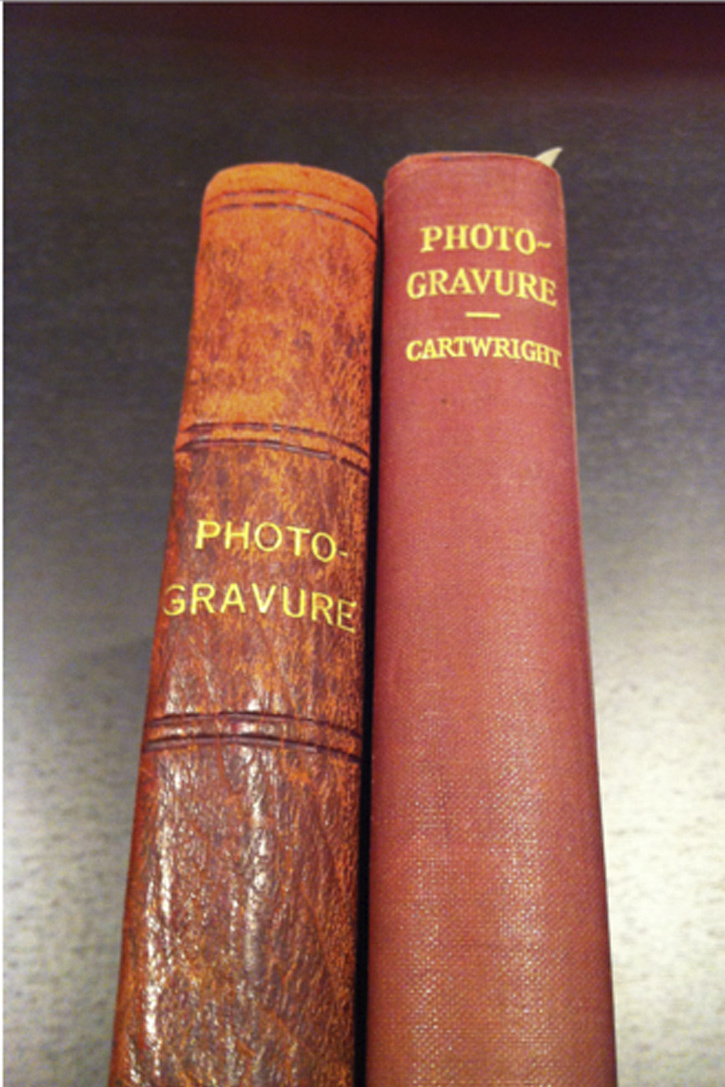
(Fotograwiura – podręcznik drukowania maszynowego i ręcznego) H.Mills Cartwright, wydanie I i II, 1930 i 1939, Zdjęcia Jan Pettersson /
Photogravure A text book on the Machine and Hand -Printed Process By H.Mills Cartwright 1st & 2nd edition, 1930 & 1939. Photos Jan Pettersson
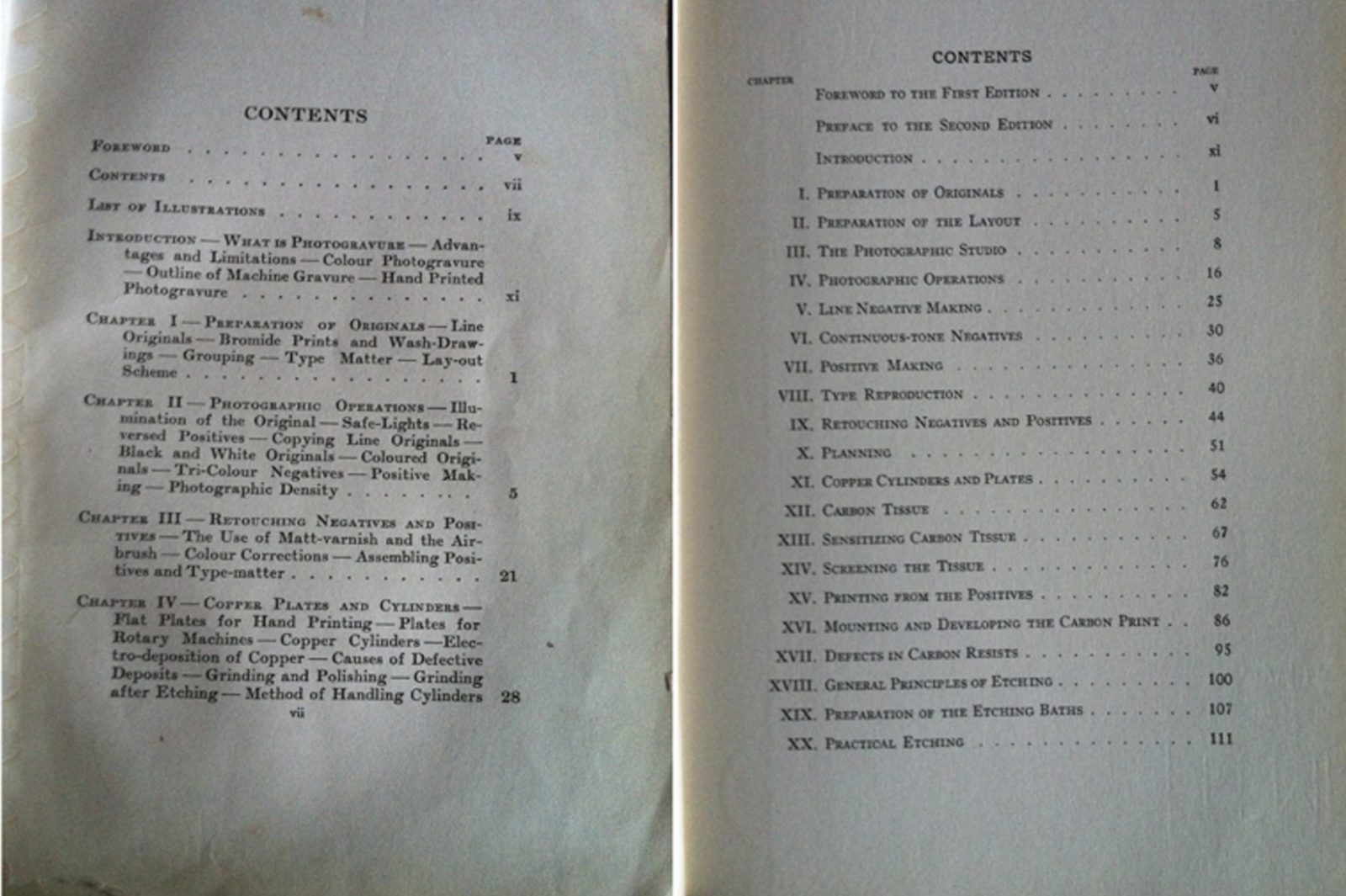
(Fotograwiura – podręcznik drukowania maszynowego i ręcznego) H.Mills Cartwright, wydanie I i II, 1930 i 1939, Zdjęcia Jan Pettersson /
Photogravure A text book on the Machine and Hand -Printed Process By H.Mills Cartwright 1st & 2nd edition, 1930 & 1939. Photos Jan Pettersson
These 2 editions have been gone through thoroughly to compare the at that time the development of the process within in a 9-year time span. Were the approach of reading 2 books simultaneously to be able to compare and filter out the difference is important for the research. Just by looking at the content pages of the 2 books you can see the difference
The last archive is of course the fantastic flea markets that exists around Europe & the rest of the world were the constant recycling of history continues.
Te dwa wydania dokładnie przejrzałem, aby porównać ówczesny rozwój tego procesu na przestrzeni dziewięciu lat. Przyjąłem metodę czytania obu książek jednocześnie, tak aby móc porównać i odfiltrować różnice istotne dla badań. Aby dostrzec te różnice, wystarczy spojrzeć na strony ze spisem treści obu książek.
Ostatnie archiwum to oczywiście fantastyczne pchle targi, działające w całej Europie i reszcie świata – trwa na nich nieprzerwany recykling historii.
Przykłady znalezisk z archiwów recyklingu historii, czyli z pchlich targów
Я ретельно переглянув ці два видання, щоб порівняти тодішній розвиток процесу за дев’ятирічний період. Я прийняв метод читання обох книг одночасно, щоб я міг порівняти та відфільтрувати відмінності, пов’язані з дослідженням. Щоб помітити ці відмінності, досить просто подивитися на сторінки змісту обох книг.
Останній архів, звісно, фантастичні блошині ринки, які працюють по всій Європі та решті світу, де історія постійно переробляється.
Приклади знахідок з архівів історії переробки, тобто з блошиних ринків
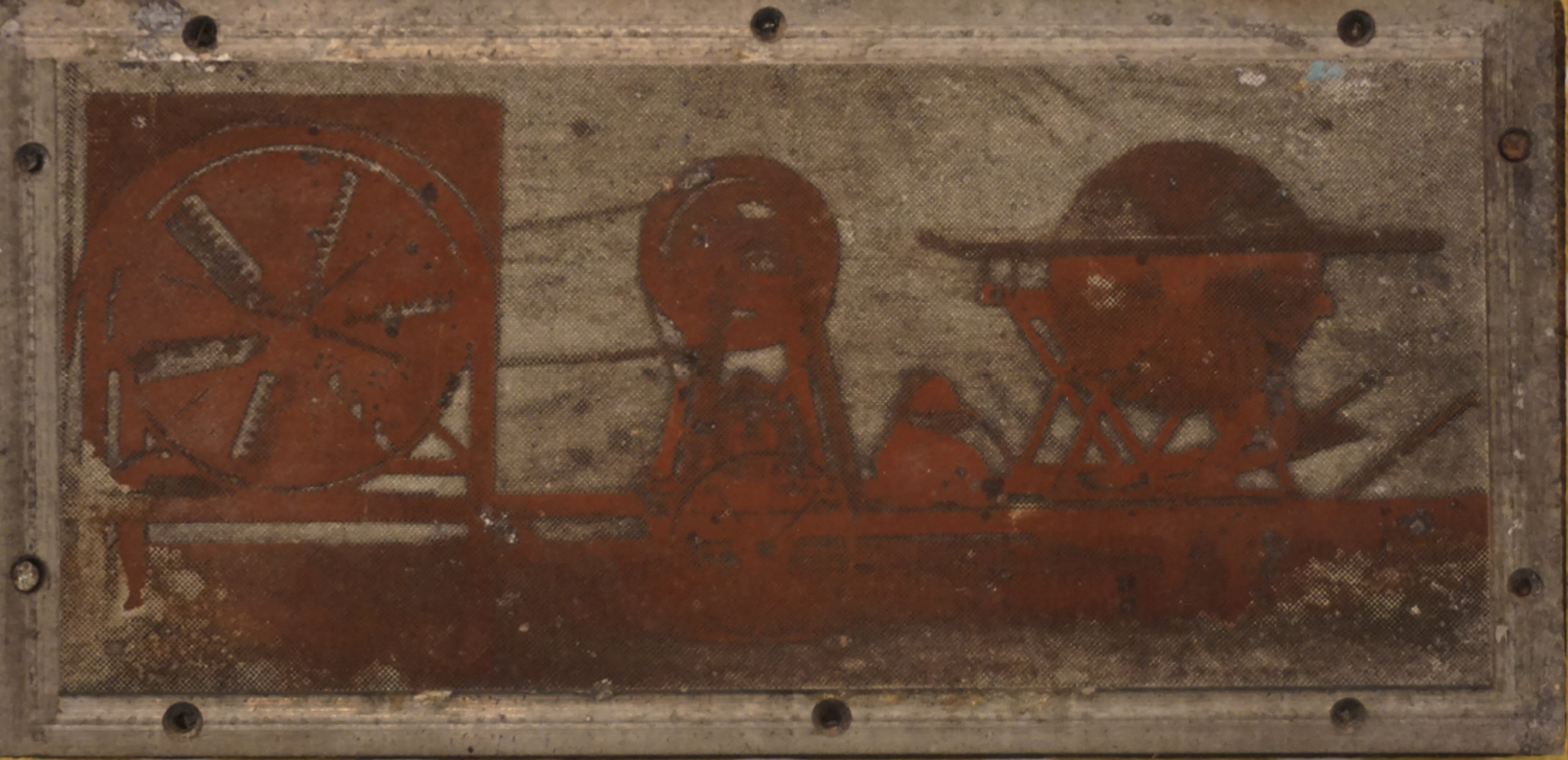
Oto przykład płyty do druku wypukłego stosowanej w typografii. Na powierzchni zachowała się jeszcze emulsja fotograficzna. Zdjęcie Jan Pettersson / Here is an example of a relief printing plate used in typography. The photographic emulsion is still on the surface. Photo Jan Pettersson / Ось приклад рельєфної друкарської форми, яка використовується у високому друку. Фотоемульсія досі зберіглася на поверхні. Фото Яна Петтерссона
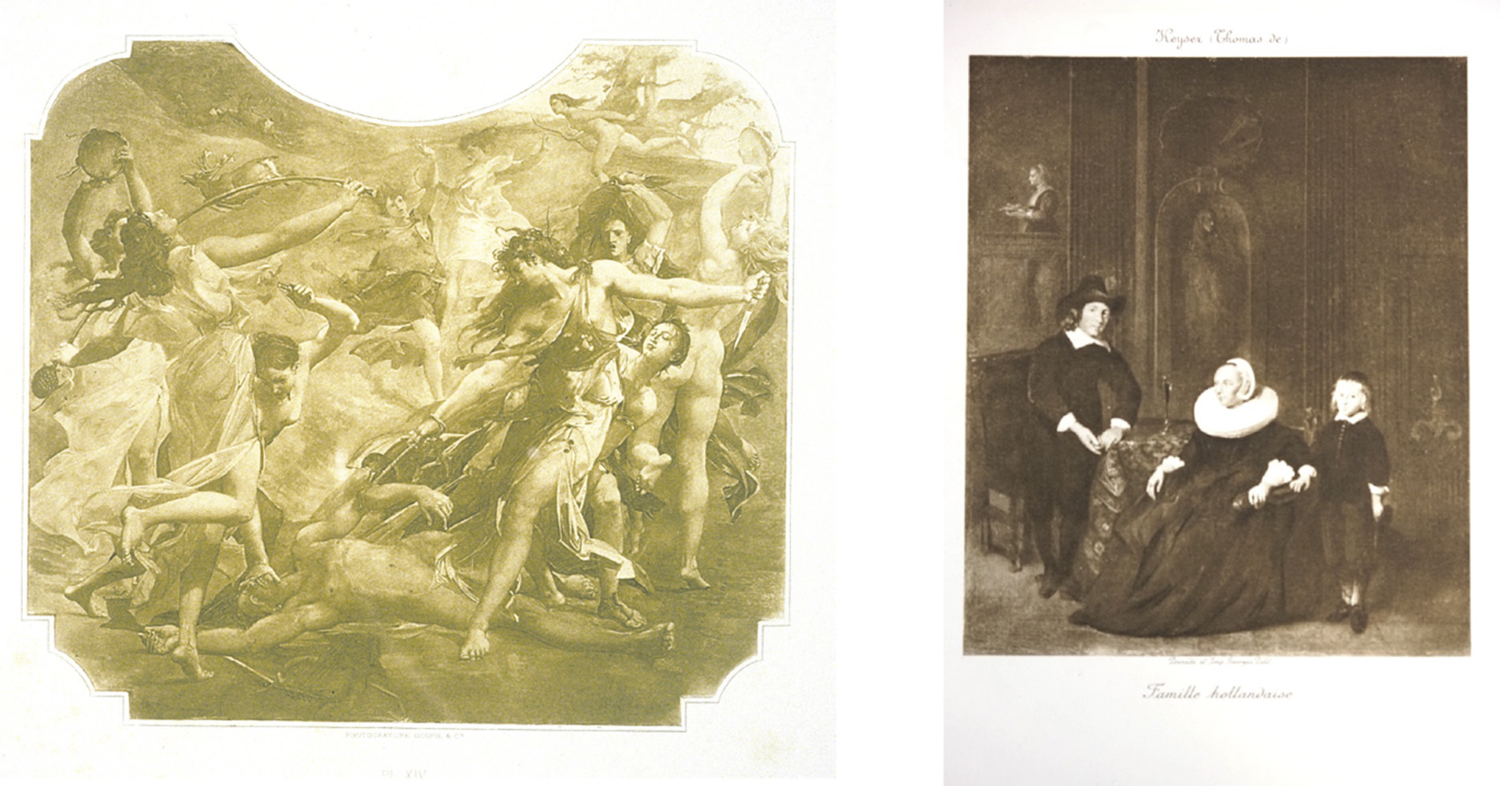
Fotograwiury Goupil & Cie (po lewej) i Georges Petite (po prawej). Zdjęcia Jan Pettersson / Photogravures by Goupil & Cie to the left & George Petite to the right, Photos Jan Pettersson / Фотогравюри Goupil & Cie (ліворуч) i Жорж Петі (праворуч). Фотографії Яна Петтерссона

Komplet odbitek rotograwiurowych drukowanych farbą niebieską z ok. 1907 roku. Zdjęcia Jan Pettersson/ 1 set of rotogravure prints printed with blue ink from around 1907, Photos Jan Pettersson / Набір відбитків глибокого друку, надрукованих синім чорнилом приблизно 1907 року.Фотографії Яна Петтерссона
Wszystkie informacje zebrane w tych archiwach zostały zintegrowane z różnymi działaniami, takimi jak publikacje, seminaria, warsztaty, wykłady i dyskusje.
Zdobytą wiedzę przekazuję podczas warsztatów i poprzez publikacje, jak również wykorzystuję w kształceniu studentów grafiki warsztatowej na Wydziale Grafiki Narodowej Akademii Sztuk w Oslo. Oto próbki dokumentacji mojej pracy z klubem fotograwiurowym.
Уся інформація, зібрана в цих архівах, була інтегрована в різні заходи, такі як публікації, семінари, майстер-класи, лекції та дискусії.
Я передаю набуті знання під час майстер-класів і через публікації, а також використовую їх у навчанні студентів графічного мистецтва на факультеті графіки Національної академії мистецтв в Осло. Ось зразки документації моєї роботи з гуртком фотогравюри.
Очищення пластини після витравлювання, полірування, перевірки та виготовлення відбитка. Фотографії Катрін Ліберґ



Prof. Jan Pettersson, kierownik Wydziału Grafiki, Wydział Sztuki i Rzemiosła Narodowa Akademia Sztuk, Oslo
Сподіваюся, вам сподобалася моя презентація.
З повагою,
проф. Ян Петтерссон, керівник відділу графіки,
Факультет декоративно-прикладного мистецтва
Національна академія мистецтв, Осло
E-mail: JanSPett@khio.no
Tekst został wygłoszony w ramach seminarium „Współczesne odnajdywanie dziedzictwa”, zorganizowanego w ramach projektu „Odnalezione. Piękno w czasie i przestrzeni”, zrealizowanego przez Akademię Sztuk Pięknych im. Jana Matejki w Krakowie we współpracy z partnerami z Islandii oraz Norwegii, w ramach Programu „Kultura” Działanie 2 „Poprawa dostępu do kultury i sztuki”, MF EOG 2014-2021.
